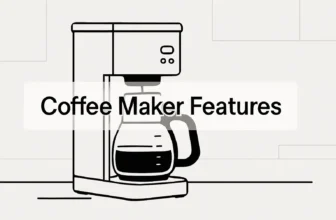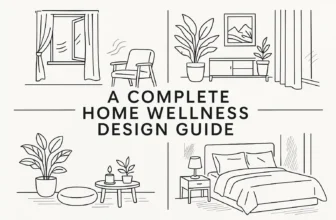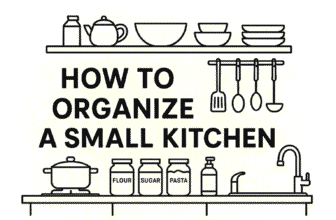The air inside your home can quietly shape how you feel day to day. A good air filter helps keep that air clean, protects your HVAC system, and reduces the dust and allergens that settle on every surface. Still, not all filters work the same way, and picking the wrong one can waste money or strain your system.
This article breaks down what matters most — filter ratings, materials, airflow, and maintenance — so you can choose one that fits your home and your air quality goals.
Table of Contents
Why Choosing the Right Air Filter Matters
The filter inside your HVAC system quietly does more work than most people realize. It affects the air you breathe, how your system performs, and how much dust collects around your home. Here’s why choosing the right one matters:
- Cleaner indoor air: A quality filter captures pollen, pet hair, mold spores, and fine dust before they move through your living space. The result is less irritation for people with allergies and fewer particles settling in the air you breathe.
- Protects your HVAC system: Filters stop debris from reaching key components like coils and fan motors. When these parts stay cleaner, the system runs more smoothly and lasts longer. If you’re interested in HVAC-grade fans, check out our review of some of the best fans in the market.
- Energy and cost savings: Filters that balance airflow and particle capture help your system breathe without strain. When airflow drops, your blower works harder, which raises energy use and can wear out equipment faster.
- Less dust indoors: With the right filter, dust and small debris stay trapped instead of coating surfaces. You’ll notice less buildup on shelves, vents, and floors between cleanings.
- More consistent comfort: Steady airflow allows your system to heat and cool evenly. Poor airflow from an unsuitable filter can leave some rooms too warm and others too cold.
What Should I Consider Before Purchase?
Before picking a filter, it helps to understand what each option actually means for your air and your system. The right choice depends on how your home operates, who lives in it, and what your HVAC can handle.
Filter Size
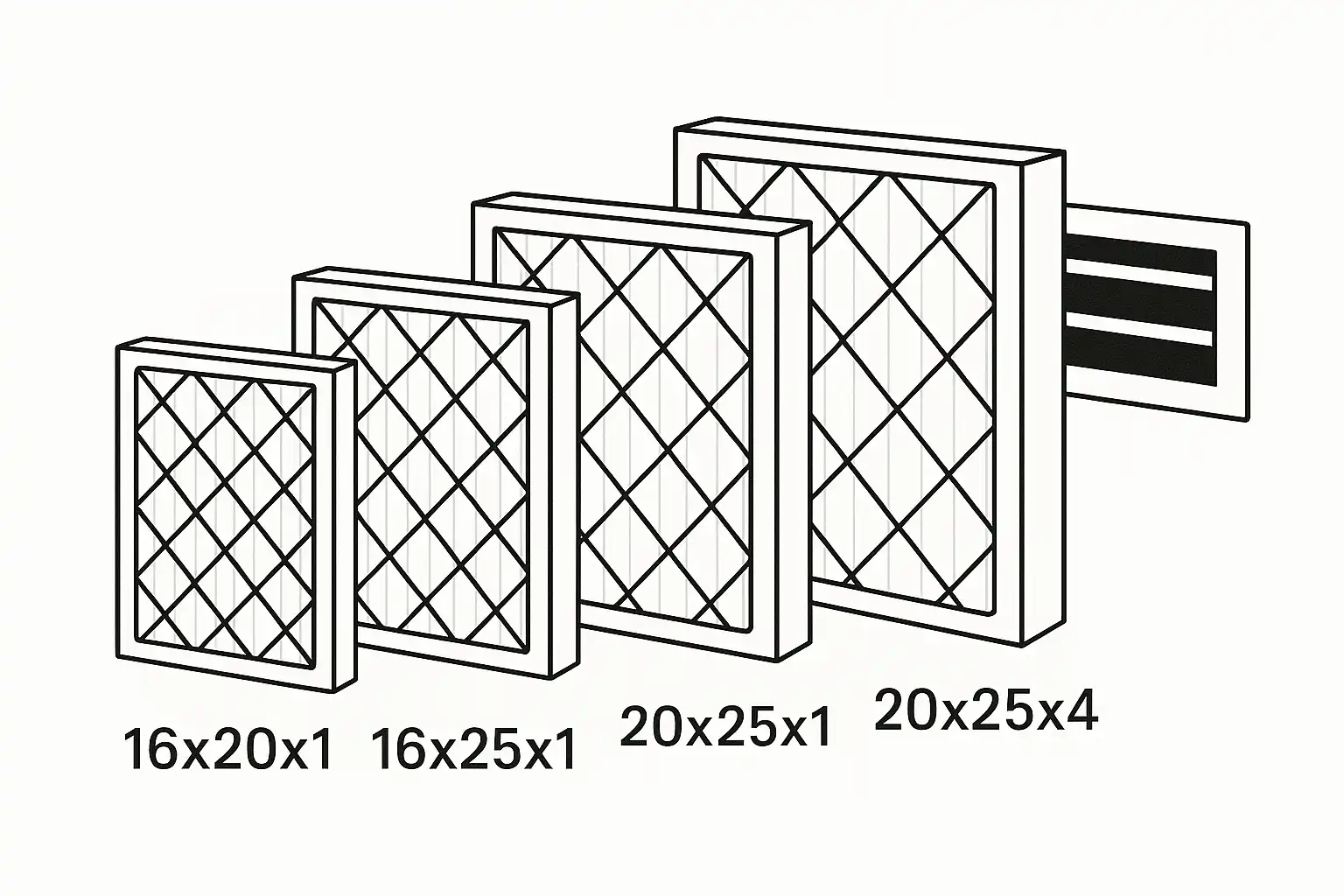
Getting the filter size right might seem simple, but it’s one of the easiest things to get wrong. A filter that’s too loose allows air to slip around it, sending dust straight into your ducts. Too tight, and it can warp or damage the frame.
Filters are listed by nominal size — the rounded-up measurements printed on the frame (for example, 20 × 25 × 1) — while their actual size is often about half an inch smaller. Always measure the old filter or the slot itself before buying a replacement.
Thickness matters just as much. A thicker filter (3 to 5 inches) has more surface area, which means it can trap more particles and usually lasts longer between changes. That said, not every system is designed for deeper filters, so always check the manufacturer’s recommendations or measure the clearance inside the return vent.
Our tips:
- Label the filter slot with the correct dimensions so you never have to re-measure.
- If your HVAC can handle it, choose a deeper filter — it can improve longevity and airflow balance.
- Avoid makeshift fits; small air gaps can undo all the filtration benefits.
Common Filter Sizes and Typical Coverage
| Filter Size (inches) | Common Use | Typical Room or Area Coverage |
| 10 × 20 × 1 | Small return vents or compact wall units | Single small room or studio (<400 sq ft) |
| 14 × 20 × 1 | Older systems or apartments | 1–2 small rooms |
| 16 × 20 × 1 | Standard residential HVAC systems | Medium room or small apartment (400–800 sq ft) |
| 20 × 20 × 1 | Larger returns in single-zone systems | Medium to large room (600–1,000 sq ft) |
| 16 × 25 × 1 | Common for mid-size homes | 2–3 connected rooms or small home |
| 20 × 25 × 1 | Typical for central air systems | Medium to large home (up to ~1,500 sq ft) |
| 20 × 25 × 4 or 5 | Deep-pleated media filters | Whole-home HVAC systems (multi-room coverage) |
Note: Coverage is approximate; actual performance depends on system design, airflow, and building layout.
Rating Systems (MERV, HEPA, etc.)
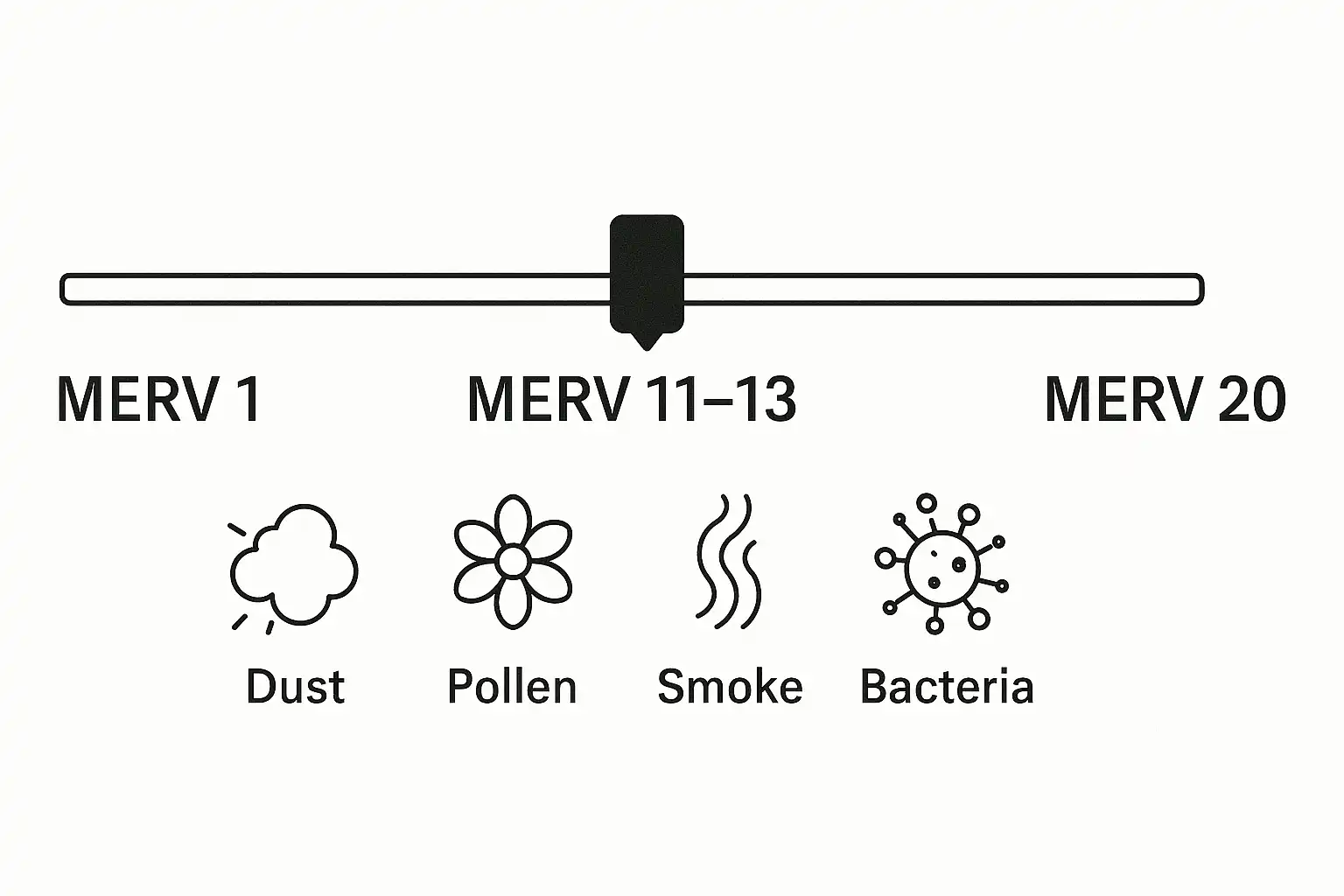
Filter ratings can be confusing at first glance, but once you understand the scales, they start to make sense. These numbers describe how small a particle the filter can trap and how well it does that job over time. The most common standard for homes is MERV, short for Minimum Efficiency Reporting Value. It runs from 1 to 20, with higher numbers catching smaller particles.
For most homes, a MERV 8 to 13 filter strikes a workable balance. MERV 8 captures dust, lint, and larger allergens; MERV 11 starts catching pet dander and fine pollen; MERV 13 can handle smoke, bacteria, and even some virus carriers. Anything above that — say MERV 14 and up — is usually found in hospitals or clean rooms, where air purity has to be near-perfect.
HEPA filters, or High-Efficiency Particulate Air filters, take it a step further. A true HEPA filter traps 99.97% of particles as small as 0.3 microns, roughly one-hundredth the width of a human hair. That’s great for standalone air purifiers, but full HEPA filters can overwhelm most standard HVAC systems unless the system is specially modified to handle them.
Our tips:
- If you have pets, allergies, or live in a high-pollution area, aim for MERV 11–13. You’ll catch most problem particles without stressing your HVAC system.
- For older or weaker blowers, stick to MERV 8–10 to keep airflow steady and energy use lower.
- During wildfire season, use filters with activated carbon layers. They absorb smoke odors and volatile compounds that standard filters miss.
- Always check your system manual before moving up to a higher rating. Too many restrictions can shorten your system’s life.
Types / Materials of Filter Media
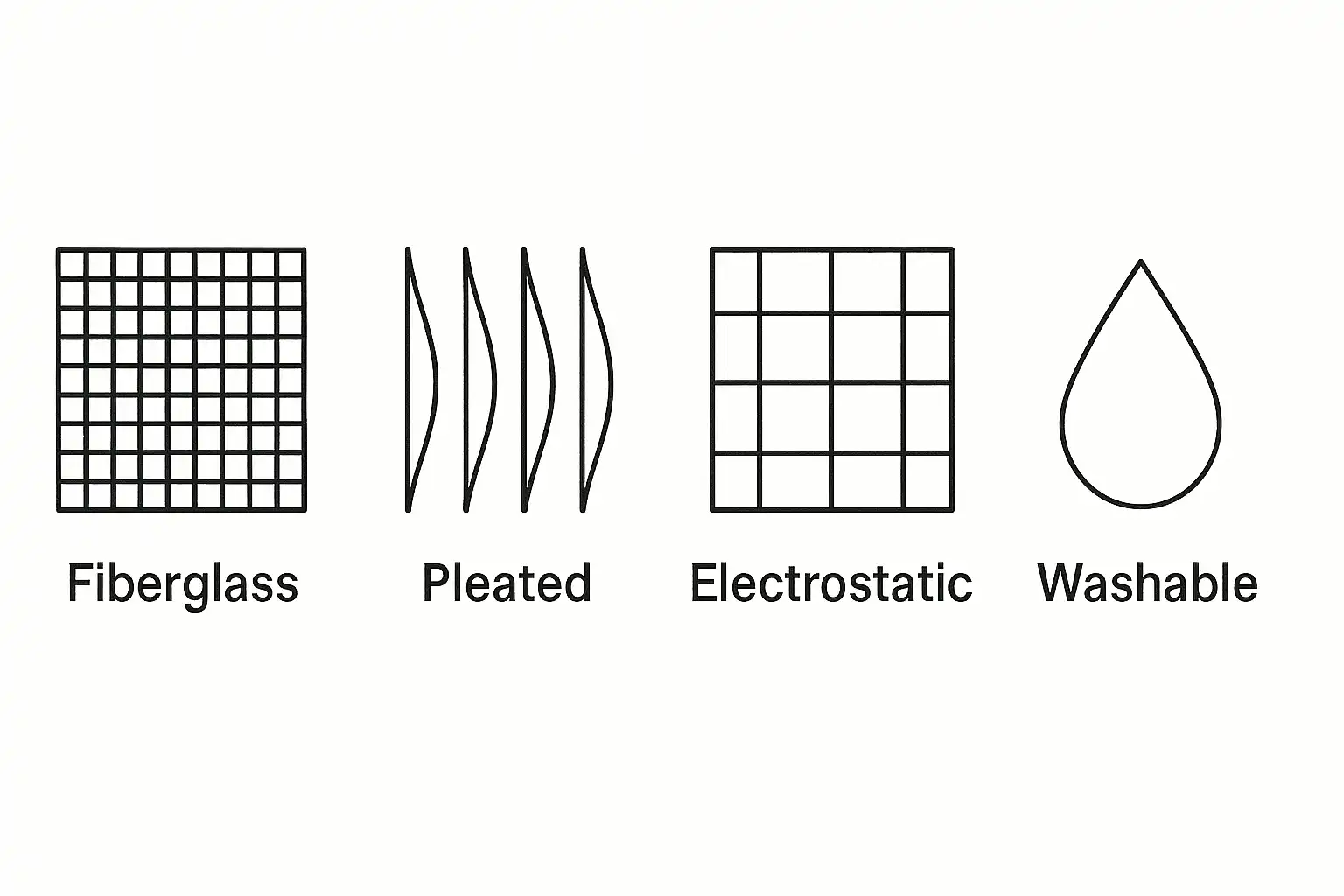
The material inside your filter determines what it can trap and how often it needs replacing. The most common options are fiberglass, pleated, electrostatic, and washable filters, each with its own trade-offs.
Fiberglass filters are the simplest: A thin layer of spun glass fibers stretched over a cardboard frame. They’re cheap and disposable, but only catch large particles like lint or dust. They work if your goal is to keep the HVAC system clear of debris, not to improve air quality.
Pleated filters use folded synthetic fibers, giving them more surface area to capture smaller particles like pollen and pet dander. They last longer and generally have MERV ratings between 8 and 13, a sweet spot for most households.
Electrostatic filters use a static charge to pull particles out of the air. Some versions are disposable, others are washable. They can capture fine dust and smoke effectively, but their performance depends on how often you clean them — a dirty electrostatic filter loses its charge.
Washable filters sound convenient, but can be tricky. They need to dry completely before reuse, or trapped moisture can lead to mold. They tend to last longer than disposables, but upkeep matters a lot more.
Our tips:
- If anyone in the home has asthma or allergies, pleated filters (MERV 11–13) usually give the best balance of airflow and filtration.
- For those who want fewer replacements, a deep-pleated 4–5 inch filter lasts longer and keeps airflow steadier.
- Washable filters work well only if you’re consistent with cleaning and drying — missing that step can hurt indoor air quality.
Airflow & Compatibility with HVAC Systems
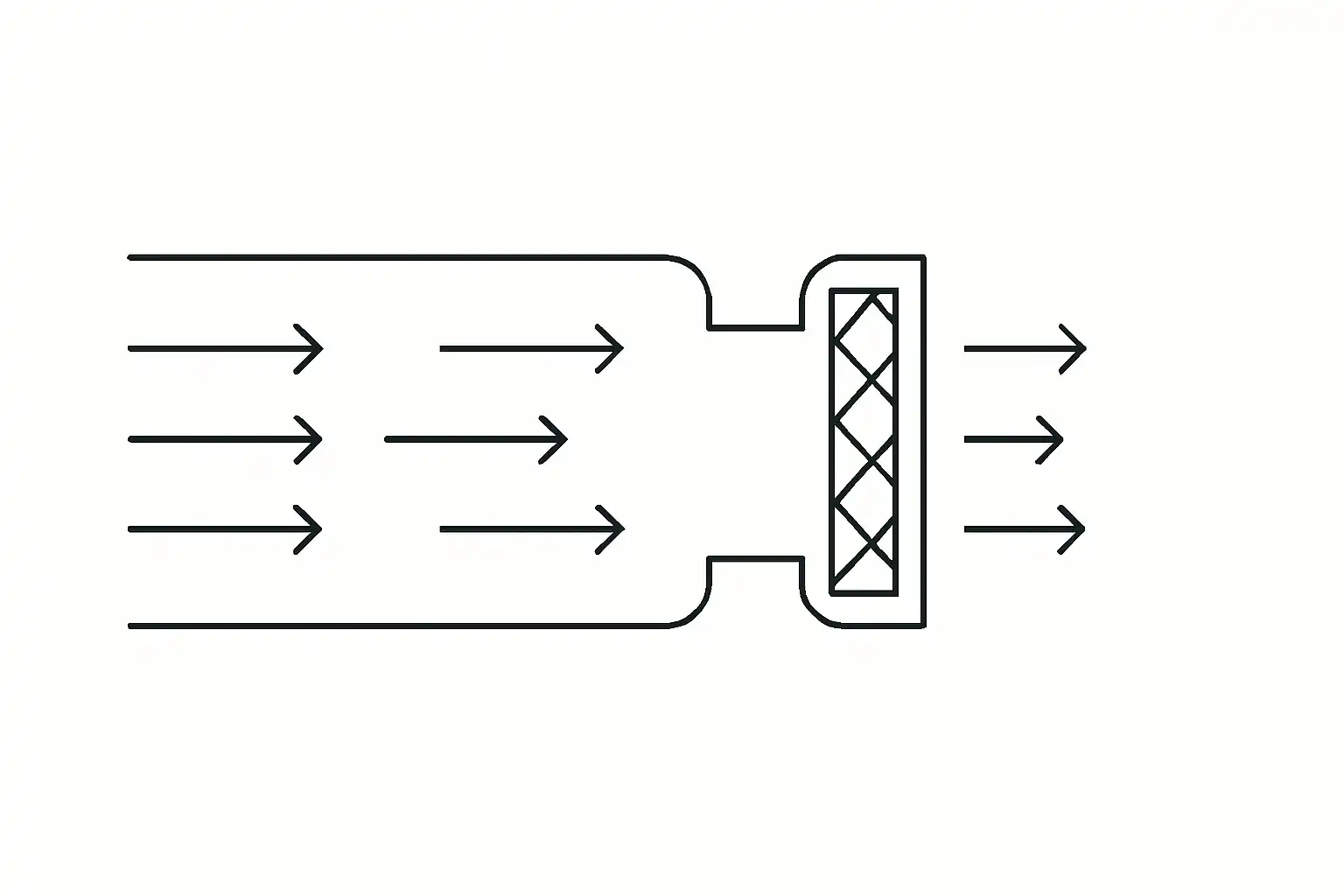
Airflow is often overlooked, but it’s what keeps the entire HVAC system alive. Every filter adds a bit of resistance as air passes through it. If that resistance is too high, airflow drops, and your blower fan starts working harder to compensate. Over time, that means higher energy bills and unnecessary wear on the motor.
The trick is finding a filter that balances filtration efficiency with air movement. If your filter is rated too high for your system, rooms might start heating or cooling unevenly, and the unit may cycle more often than usual. On the flip side, a filter that’s too thin or loosely fitted won’t protect your equipment at all.
Our tips:
- Before upgrading to a higher MERV filter, check your system’s manual or model number online to confirm what airflow it supports.
- Keep vents and returns unblocked by furniture or drapes. Restricted return air can mimic the effect of a too-dense filter.
- If your system struggles to keep up after a filter change, that’s a sign the filter may be restricting too much air.
Your Home’s Unique Needs: Pets, Allergies, Environment
Every home’s air is different. A family with pets will have different filtration needs than a city apartment near traffic or a rural home dealing with pollen. The filter that works best depends on the mix of those conditions.
If you have pets, look for filters rated MERV 10–12 that specifically mention trapping pet dander and hair. Pet owners often need to replace filters more frequently — sometimes every 30 to 60 days — since hair and dander build up quickly.
For allergy or asthma sufferers, choose filters with higher MERV ratings (11–12) or consider units with activated carbon layers to trap odor and smoke compounds. During allergy season, this can make breathing easier indoors.
Homes near construction zones, highways, or wildfire-prone areas benefit from filters designed to capture fine dust and smoke. Activated carbon filters can help remove odors and volatile gases that standard filters miss.
Our tips:
- Create a habit of checking your filter monthly during high-use seasons, summer and winter, even if it’s rated for three months.
- Keep a replacement reminder on your phone or HVAC system panel.
- If your filter clogs quickly despite regular changes, consider sealing gaps in ducts or having the system checked for leaks.
How Often Should I Maintain or Replace My Filter?
Even the best air filter can’t do its job once it’s packed with dust. Over time, particles build up, airflow drops, and the system has to work harder to move air through the clog. That not only weakens filtration but can also raise energy use and shorten the life of your HVAC unit.
Most manufacturers recommend replacing standard 1-inch filters every 30 to 90 days, but that’s just a general rule. How fast your filter fills up depends on your home, habits, and environment.
Tips:
- Check your filter once a month by holding it up to a light. If you can’t see light through it, it’s time for a change.
- Write the installation date on the filter’s edge. This is a simple reminder that saves guesswork later.
- During peak heating or cooling seasons, check more often; the system runs longer hours and moves more air (and dust).
For deeper media filters (4–5 inches), replacement may only be needed every 6 to 12 months.
General Replacement Guidelines
| Home Situation | Filter Type / Thickness | Recommended Replacement Frequency | Extra Notes |
| Single occupant, no pets, no allergies | 1” fiberglass or pleated | Every 90 days | Check more often in summer or winter |
| Family home with pets | 1” or 2” pleated | Every 30–60 days | Pet hair and dander shorten lifespan |
| Allergy or asthma concerns | MERV 11–13 pleated | Every 30–45 days | Keeps allergens and fine dust lower |
| Urban or high-pollution area | MERV 11+ with carbon layer | Every 30–60 days | Carbon helps capture odors and smoke |
| Smokers in household | Pleated or carbon filter | Every 30 days | Smoke clogs filters quickly |
| Vacation or seasonal home | Pleated 1” or 4” | Every 6–12 months | Less use = slower buildup |
| Deep media filter (4–5”) | High-capacity pleated | Every 6–12 months | Check quarterly for dust levels |
Conclusion
Choosing the right air filter becomes simple once you understand the basics. Size, rating, material, and airflow all play a part, but your home’s conditions are what truly matter. A good filter keeps the air cleaner, protects the HVAC system, and helps control costs over time. Check it regularly, replace it as needed, and adjust your choice if something changes at home, such as new pets or allergy issues. Small, consistent actions like these can noticeably improve everyday comfort.
FAQ
Check the old filter’s frame or measure the slot’s inside width, height, and thickness.
Only if your HVAC system can handle it without reducing airflow.
They can last longer, but must be cleaned and thoroughly dried to prevent mold.
Standard filters do not. Use one with activated carbon to capture smoke or odor.
Running it more often helps circulation and filtration but may increase energy use slightly.
Write the date on the filter frame or set a reminder on your phone or calendar.
This content is generated by AI, reviewed by our editorial team, and features products that have been thoroughly evaluated and chosen.


